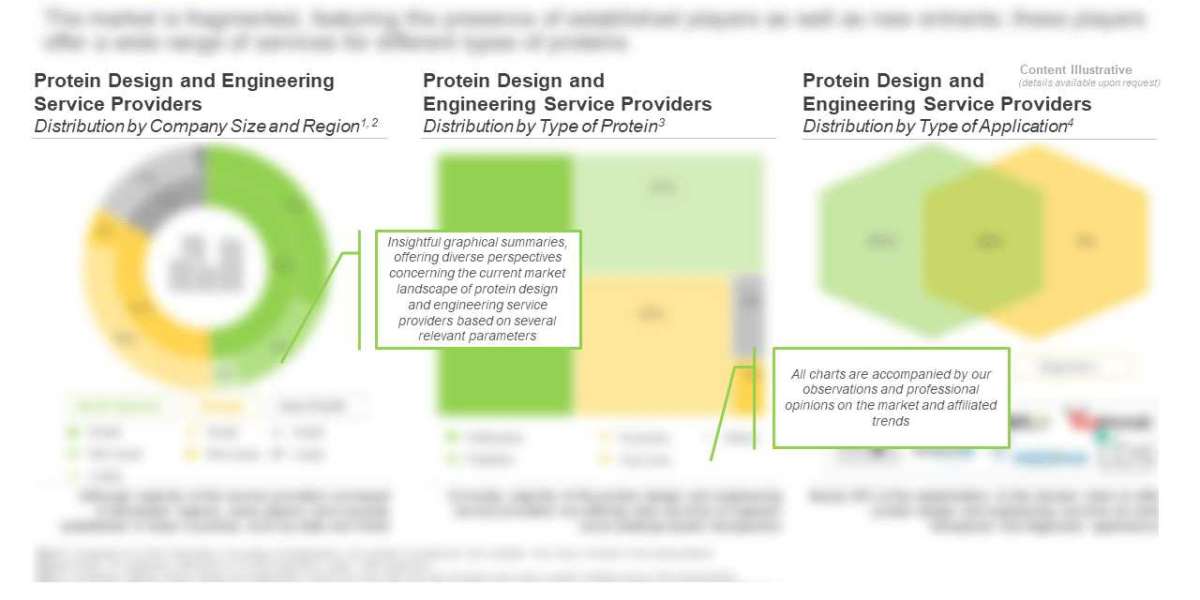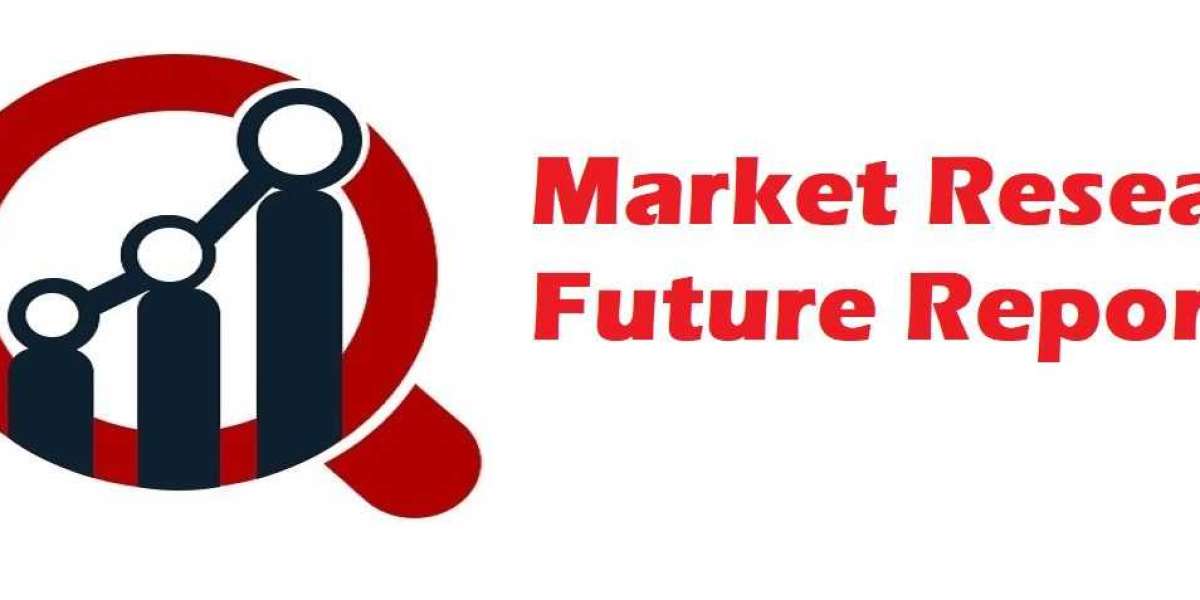To order this detailed 280+ page report, please visit https://www.rootsanalysis.com/reports/protein-design-and-engineering-market.html
Key Inclusions
- A detailed review of the overall landscape of companies offering protein design and engineering services to various organizations, including pharma / biotech firms, CROs and research / academic institutes, along with analysis based on various relevant parameters, such as year of establishment, company size (in terms of employee count) and location of headquarters. The chapter also provides details related to protein design and engineering service(s) offered (protein sequencing, protein library generation, protein screening, protein characterization, protein purification, de-novo protein synthesis and in-silico analysis), additional services offered (protein expression, drug discovery, protein-protein interaction analysis, protein identification, bio imaging of proteins, protein extraction and biological pathway identification), type of protein engineering approach used (directed evolution, rational designing and semi- rational designing), type of protein (antibodies, enzymes, peptides, vaccines and others), type of application (therapeutics and diagnostics) and type of protein expression (cell surface and cell free).
- A competitiveness analysis of protein design and engineering service providers, segmented into three categories, namely small (1-50 employees), mid-sized (51-500 employees), and large companies (500 employees). Within the peer group, companies were ranked based on various relevant parameters, such as supplier power (based on the experience) and company competitiveness (based on parameters, such as number of protein design and engineering services offered, type of technique used, type of protein engineering approach used, number of additional services offered, application areas and type of protein expression).
- Elaborate profiles of key players that are engaged in offering services for protein design and engineering. Each profile features a brief overview of the company (including information on year of establishment, number of employees, location of headquarters and key executives), financial information (if available), information on services offered, recent developments and an informed future outlook.
- A detailed assessment of the current market landscape of protein design and engineering technology providers, featuring analysis based on several parameters, such as year of establishment, company size (in terms of employee count) and location of headquarters. In addition, the chapter highlights an in-depth analysis of various protein design and engineering technologies based on type of protein design and engineering service(s) supported (protein sequencing, protein library generation, protein screening, protein characterization, de novo protein synthesis and in-silico analysis), additional services supported (drug discovery, protein-protein interaction analysis and protein expression), type of protein engineering approach used (rational designing, directed evolution and semi-rational designing), type of protein (proteins / peptides, antibodies, enzymes, cytokines and viruses) and type of application (therapeutics and diagnostics).
- An insightful 2×2 matrix representation of the competitiveness analysis of various protein design and engineering technologies segregated into two peer groups based on the company size of their respective technology provider, namely small (1-50 employees) and mid-sized companies (51-500 employees). Within the peer group, technologies were ranked based on various relevant parameters, such as supplier power (based on the experience of the technology provider) and technology competitiveness (based on parameters, including number of protein design and engineering services supported, number of additional services supported, type of protein and type of application).
- Elaborate profiles of key players that are engaged in offering technologies for protein design and engineering. Each profile features a brief overview of the company (including information on year of establishment, number of employees, location of headquarters and key executives), financial information (if available), information on technology offered, recent developments and an informed future outlook.
- An analysis of the partnerships that have been inked by stakeholders engaged in this domain, during the period 2017-2021, covering RD agreements, technology licensing agreements, product development and commercialization agreements, research agreements, service alliances, product development agreements, acquisitions / mergers, technology / software development agreements and other related agreements.
- An in-depth analysis of over 130 protein / peptide based therapy developers that are likely to partner with protein design and engineering services and technology providers, based on several relevant parameters, such as developer strength (based on company size and its experience), pipeline strength (based on the number of drugs in pipeline and their stage of development and therapeutic area).
- An in-depth analysis of over 550 patents filed / granted related to protein design and engineering, till 2021. The instances have been analyzed based on various relevant parameters, such as type of patent, application year, publication year, regional applicability, CPC symbols, emerging focus areas, type of applicant, leading patent assignees (in terms of number of patents filed / granted), patent benchmarking and valuation.
- A detailed analysis of completed, ongoing and planned clinical studies of various protein / peptide based therapies on relevant parameters, such as trial registration year, trial phase, trial recruitment status, type of sponsor, target patient segment, leading industry and non-industry players (in terms of number of registered trials conducted) and key geographical regions.
- A case study presenting the key characteristics of novel peptide therapeutics, along with information on their applications and advantages, as well as key challenges associated with their development process.
The report also features the likely distribution of the current and forecasted opportunity across important market segments, mentioned below:
- Type of Protein Engineering Approach Used
- Rational Designing
- Directed Evolution
- Semi - Rational Designing
- Type of Protein
- Antibodies
- Peptides
- Enzymes
- Vaccines
- Others
- Type of Application
- Therapeutics
- Diagnostics
- Type of End User
- Pharma / Biotech Firms
- CROs
- Research / Academic Institutes
- Key Geographical Regions
- North America
- Europe
- Asia-Pacific
- Latin America
- MENA
- Rest of the World
To request a sample copy / brochure of this report, please visit https://www.rootsanalysis.com/reports/protein-design-and-engineering-market.html
Key Questions Answered
- Who are the leading players offering protein design and engineering services?
- What is the relative competitiveness of different protein design and engineering service providers?
- What are the popular types of protein design and engineering technologies available in the market?
- What types of partnership models are commonly being adopted by stakeholders in this industry?
- How is the intellectual property landscape in this field likely to evolve in the foreseen future?
- Which are the most active clinical trial centers?
- What are the major market trends and driving factors that are likely to impact the growth of protein design and engineering market?
- How is the current and future market opportunity likely to be distributed across key market segments?
You may also be interested in the following titles:
- ADC Cytotoxic Payloads / Warheads Market: Products and Services Market: Industry Trends and Global Forecasts, 2021-2035
- Site Management Organizations (SMO) Market: Industry Trends and Global Forecasts, 2021-2035
- Glycosylation Analysis Services Market: Industry Trends and Global Forecasts, 2021-2030
- Display Library Technologies and Affiliated Services Market: Industry Trends and Global Forecast, 2021-2030
- Peptide Therapeutics Market: Industry Trends and Global Forecasts, 2021-2030
Contact:
Ben Johnson
+1 (415) 800 3415
+44 (122) 391 1091








